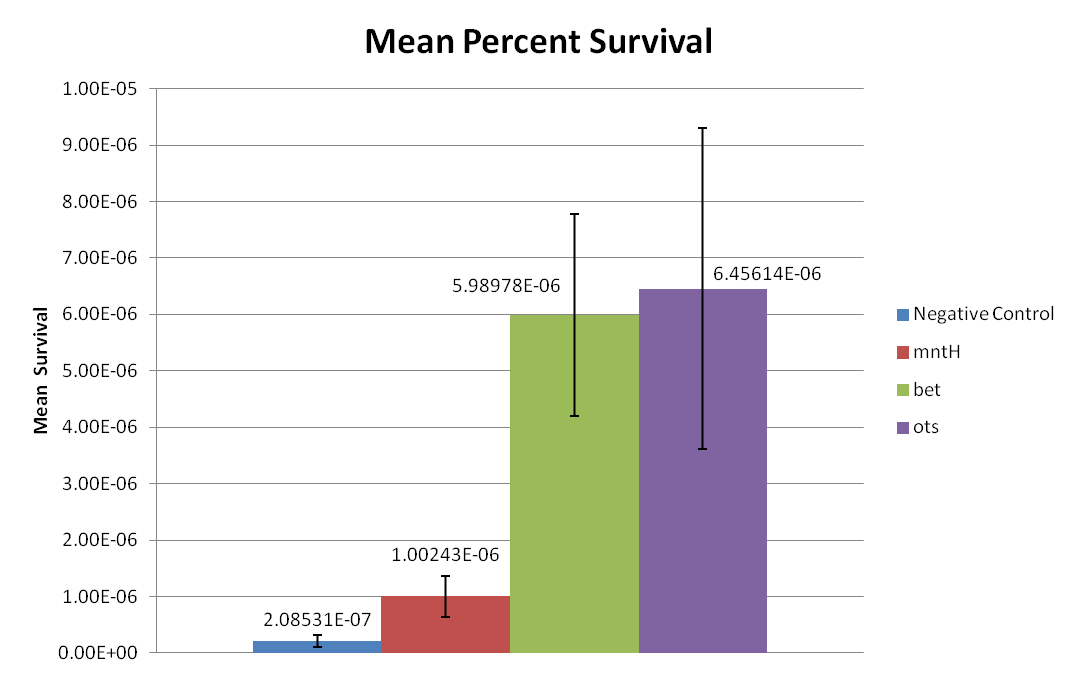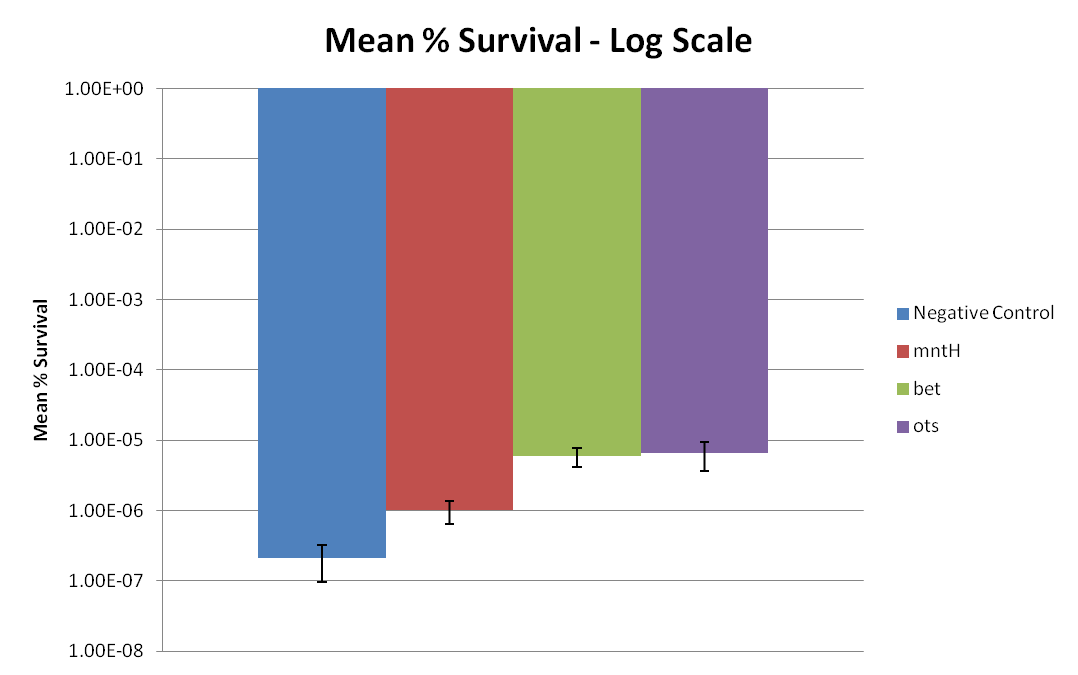Team:Stanford-Brown/HellCell/Desiccation
From 2012.igem.org
(/* Desiccation At a glance Extremophiles: Pantoea agglomerans and Saccharomyces cerevisiae Proteins of interest: choline dehydrogenase and betaine aldehyde dehydrogenase (glycine betaine biosynthesis pathway) and Osmoregulatory trehalose synthe) |
Vishesh.jain (Talk | contribs) |
||
| Line 25: | Line 25: | ||
The gram-negative biocontrol agent ''Pantoea agglomerans'' was ineffective at controlling blue mold on fruits because of the long periods of dehydration that it experienced during the processing of the fruit (Bonaterra, Camps, and Montesinos 2005). Its effectiveness was significantly increased when it accumulated trehalose and glycine betaine during desiccation, and it was hypothesized that these osmoprotectants “operate through protection of membrane phospholipids by direct hydrogen bounding with phospolipid head groups maintaining the liquid crystal state and stabilising proteins by water replacement via hydrogen bounding” (Bonaterra, Camps, and Montesinos 2005). Glycine betaine was also found to have an osmoprotectant role in ''E. coli'' itself (Cayley, Lewis, and Record 1992). | The gram-negative biocontrol agent ''Pantoea agglomerans'' was ineffective at controlling blue mold on fruits because of the long periods of dehydration that it experienced during the processing of the fruit (Bonaterra, Camps, and Montesinos 2005). Its effectiveness was significantly increased when it accumulated trehalose and glycine betaine during desiccation, and it was hypothesized that these osmoprotectants “operate through protection of membrane phospholipids by direct hydrogen bounding with phospolipid head groups maintaining the liquid crystal state and stabilising proteins by water replacement via hydrogen bounding” (Bonaterra, Camps, and Montesinos 2005). Glycine betaine was also found to have an osmoprotectant role in ''E. coli'' itself (Cayley, Lewis, and Record 1992). | ||
| - | To learn more about the ability of trehalose and glycine betaine and potentially apply them towards desiccation resistance, the Hell Cell Squad isolated the genes necessary for biosynthesis of trehalose and glycine betaine in ''E. coli'' and put them into the Test Plasmid. We also tested | + | To learn more about the ability of trehalose and glycine betaine and potentially apply them towards desiccation resistance, the Hell Cell Squad isolated the genes necessary for biosynthesis of trehalose and glycine betaine in ''E. coli'' and put them into the Test Plasmid. We also tested MntH mutants for desiccation resistance-conferring properties (see Radiation). |
~stuff about protocols~ | ~stuff about protocols~ | ||
Revision as of 04:16, 3 October 2012
Desiccation
At a glance
Extremophiles: Pantoea agglomerans and Saccharomyces cerevisiae
Proteins of interest: choline dehydrogenase and betaine aldehyde dehydrogenase (glycine betaine biosynthesis pathway) and Osmoregulatory trehalose synthesis A and B (trehalose synthesis pathway)
Consensus: Effective
Saccharomyces cerevisiae, baker’s yeast, is remarkably resistant to desiccation, and it has been shown that certain osmoprotectant chemicals accumulate in these cells when desiccated. One of these chemicals is trehalose, a disaccharide that was initially implicated in desiccation resistance because of its accumulation (Calahan, Dunham, DeSevo, and Koshland 2011). Surprisingly, assays of trehalose’s effectiveness in the resistance of yeast have produced conflicting and inconsistent results (Calahan et al. 2011).
The gram-negative biocontrol agent Pantoea agglomerans was ineffective at controlling blue mold on fruits because of the long periods of dehydration that it experienced during the processing of the fruit (Bonaterra, Camps, and Montesinos 2005). Its effectiveness was significantly increased when it accumulated trehalose and glycine betaine during desiccation, and it was hypothesized that these osmoprotectants “operate through protection of membrane phospholipids by direct hydrogen bounding with phospolipid head groups maintaining the liquid crystal state and stabilising proteins by water replacement via hydrogen bounding” (Bonaterra, Camps, and Montesinos 2005). Glycine betaine was also found to have an osmoprotectant role in E. coli itself (Cayley, Lewis, and Record 1992).
To learn more about the ability of trehalose and glycine betaine and potentially apply them towards desiccation resistance, the Hell Cell Squad isolated the genes necessary for biosynthesis of trehalose and glycine betaine in E. coli and put them into the Test Plasmid. We also tested MntH mutants for desiccation resistance-conferring properties (see Radiation).
~stuff about protocols~
~analysis stuff~
Sources:
Calahan, D., Dunham, M., DeSevo, C., Koshland, D.E. (2011). Genetic analysis of desiccation tolerance in Saccharomyces cerevisiae. Genetics, 189: 507-519.
Bonaterra, A., Camps, J., Montesinos, E. (2005). Osmotically induced trehalose and glycine betaine accumulation improves tolerance to desiccation, survival and efficacy of the postharvest biocontrol agent Pantoea agglomerans EPS125. FEMS Microbiol. Lett., 250: 1-8.
Cayley, S., Lewis, B. A., Record Jr., T. (1992). Origins of the osmoprotective properties of betaine and proline in Escherichia coli K-12. J. Bacteriol. 174(5): 1586-1595.
 "
"

